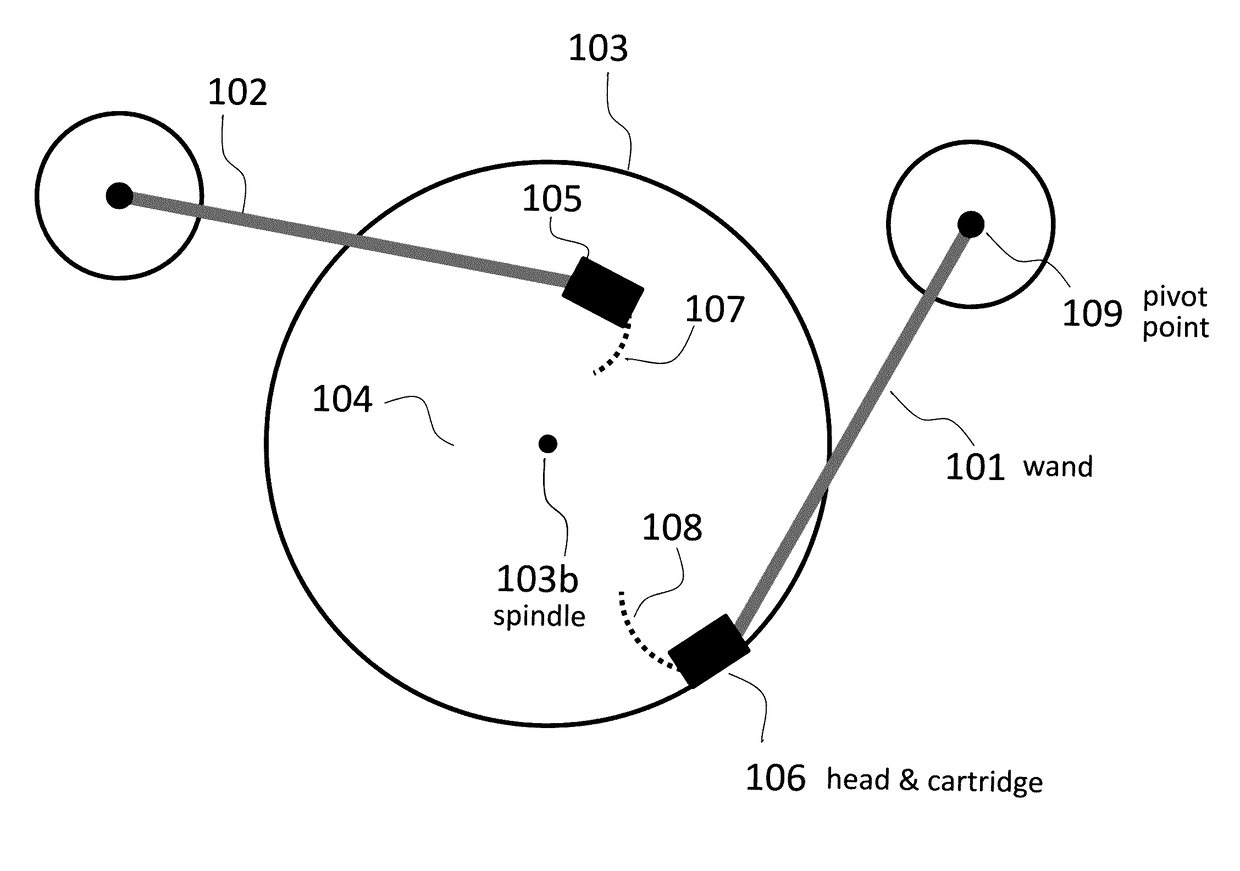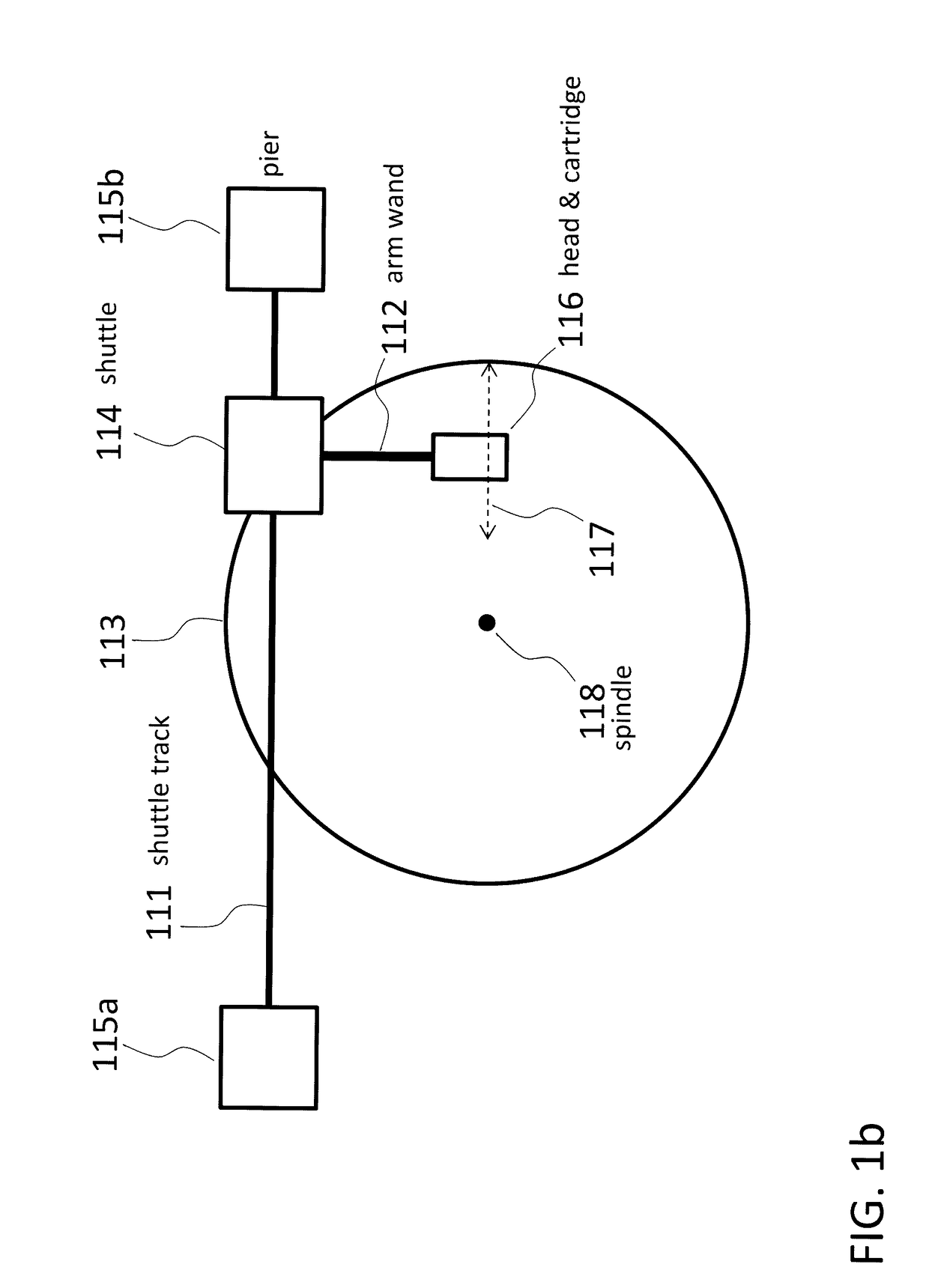Systems and methods for reducing audio distortion during playback of phonograph records using multiple tonearm geometries
a technology of phonograph records and geometries, applied in the field of analog music conversion, can solve problems such as exceedingly expensive implementation, and achieve the effects of less unwanted ringing, more accurate transcription, and increased accuracy
- Summary
- Abstract
- Description
- Claims
- Application Information
AI Technical Summary
Benefits of technology
Problems solved by technology
Method used
Image
Examples
Embodiment Construction
[0055]As audio recording, storage and playback systems evolved over the years, subtle noise and distortion artifacts secondary to the technologies then available became more and more detectable to certain classes of listeners. One of the most difficult of these issues to address has been the artifacts inherent in the conflict between the way audio information is recorded to analog audio disks, and the way it is then played back.
[0056]Vinyl phonograph disks are pressed from molds of a master disk that is cut by a mechanical lathe device; an example of which is shown in FIG. 24. The cutting head is driven by a worm drive across the surface of the disk, passing along a straight radial path from the outermost to the innermost groove as diagramed in FIG. 1b. A problem with playback tracking accuracy arises from the traditional pivoting phonograph tonearm that has been in use in one form or another for almost a century. As the stylus follows the groove, the tonearm pivots causing the styl...
PUM
| Property | Measurement | Unit |
|---|---|---|
| distance | aaaaa | aaaaa |
| distance | aaaaa | aaaaa |
| distance | aaaaa | aaaaa |
Abstract
Description
Claims
Application Information
 Login to View More
Login to View More - R&D
- Intellectual Property
- Life Sciences
- Materials
- Tech Scout
- Unparalleled Data Quality
- Higher Quality Content
- 60% Fewer Hallucinations
Browse by: Latest US Patents, China's latest patents, Technical Efficacy Thesaurus, Application Domain, Technology Topic, Popular Technical Reports.
© 2025 PatSnap. All rights reserved.Legal|Privacy policy|Modern Slavery Act Transparency Statement|Sitemap|About US| Contact US: help@patsnap.com



